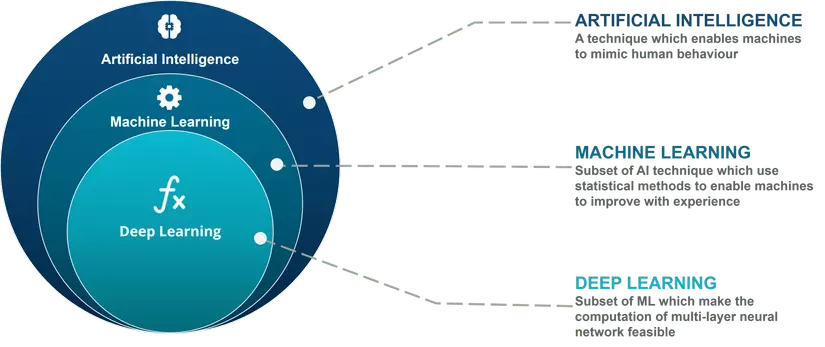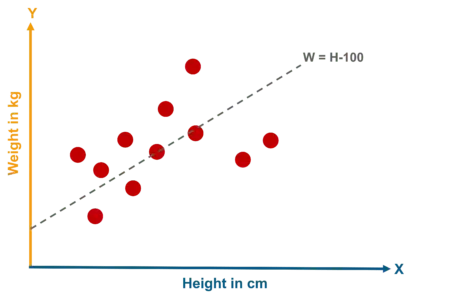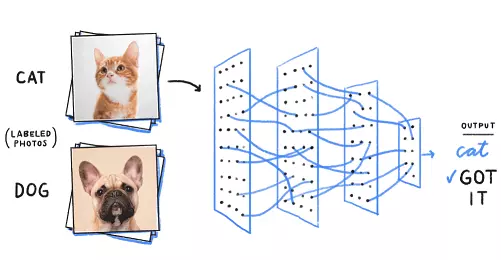Source: Edureka
AI, Machine Learning and Deep Learning, these terms confuse a lot of people. If you are also one of them then this blog – AI vs Machine Learning vs Deep Learning is definitely for you.
1. AI vs Machine Learning vs Deep Learning
Artificial Intelligence (AI) is the broader umbrella under which Machine Learning (ML) and Deep Learning (DL) were born. And you can also see in the diagram that even DL is a subset of Machine Learning. So all three of them are AI, machine learning, and deep learning just subsets of each other.

2. Overview Artificial Intelligence
The term Artificial Intelligence was first coined in 1956, but why has AI become more popular today? This is due to the significant increase in data volume, advanced algorithms, and computation and storage improvements.
The data we have is not enough to predict the exact outcome. But now there is a significant increase in the amount of data. The statistics show that by 2020, the cumulative volume of big data will increase from 4.4 zettabytes to about 44 zettabytes or 44 trillion (trillion) GB of data.
We now have even more advanced algorithms, superior computation and storage capabilities that can handle such large amounts of data. As a result, it’s expected that 70% of businesses will deploy AI over the next 12 months, up from 40% in 2016 and 51% in 2017.
3. Artificial Intelligence?
“Artificial intelligence is a technique that allows machines to behave like humans by recreating their behavior and nature.”
Artificial intelligence enables machines to learn from their experience. Machines tailor their responses based on new inputs, thus performing human-like tasks by processing large amounts of data and identifying patterns in them.
AI is explained by the same magic: Building churches
You can think of building an artificial intelligence like building a church.

The first church took generations to complete, so most of the workers working on it never saw the end result. The people who worked on it took pride in their craft, building bricks and chiseled stones to be placed in the Great Structure. So, as AI researchers, we should think of ourselves as humble brick makers, tasked with studying how to build components (e.g. parsers, planners, learning algorithms, etc.) that one day, somewhere, will integrate into the intelligent system.
Some examples of Artificial Intelligence in our daily lives are Apple’s Siri, the chess computer, tesla’s self-driving car, and more. These examples are based on deep learning and natural language processing.
Well, this is about what AI is and how it has achieved its hype. So let’s keep discussing machine learning and see what it is and why it was introduced.
4. Machine Learning?
Machine Learning was born in the late 80s and early 90s. But what happened to humans that caused Machine Learning to come?
Statistics : How to efficiently train large complex models?
Computer Science & Artificial Intelligence (Computer Science & Artificial Intelligence) : How to train more powerful versions of AI systems?
Neuroscience : How to design brain activity models?
So what is machine learning?
“Machine learning is a subset of artificial intelligence. It allows machine learning and making predictions based on its experience (data) “
Understand Machine Learning with an example
Let’s say you want to create a system that can predict a person’s expected weight based on its height. The first thing you do is collect the data. Let us say this is how your data looks like this:

Each point on the chart represents one data point. For starters, we can draw a simple line to predict weight based on height. For example, a simple line:
W = H – 100
Where W is weight in kg and H is height in cm
This line can help us make predictions. Our main goal is to reduce the difference between the estimated value and the actual value. So to achieve it, we try to draw a straight line that fits all these different points and minimize the error and make them as small as possible. Reducing the error or difference between the actual and estimated values increases performance.
Furthermore, the more data points we collect, the better our model will get. We can also improve our model by adding more variables (ex: Gender) and creating different lines of predictions for them. Once the line is created, so in the future, if a new data (e.g. a person’s height) is provided for the model, it will easily predict the data for you and will indicate the weight. his prediction.
I hope you have a good understanding of machine learning. So let’s keep learning about Deep Learning.
1. Deep learning?
“Deep learning is a specific type of machine learning that achieves great power and flexibility by learning to represent the world in an integrated hierarchical form of concepts or abstractions”
You can think of deep learning as a rocket engine and its fuel as the vast amount of data that we feed these algorithms.
The concept of deep learning is not new. But lately its hype has increased and deep learning is gaining more attention. This field is a special kind of machine learning that is inspired by the function of our brain cells called neural networks. It simply takes data connections between all the artificial neurons and modifies them according to the data sample. More neurons are needed if the size of the data is large. It automatically features learning at many levels of abstraction, thus allowing the learning system to map complex functions without being dependent on any particular algorithm.
Understand Deep Learning with analogies
Let me start with a simple example that explains how things work at the conceptual level.
Example 1:
Let us try and understand how you recognize a square from other shapes.

The first thing is to check if there are 4 lines associated with a figure (simple concept!). If yes, we further test, if they are connected and closed, again if yes, we finally check if it is perpendicular and all its edges are equal (Yes!). Well, this is just a nested hierarchy concept.
What we did, we did a complicated task of identifying a square in this case and dividing it into simpler tasks. Now, this Deep Learning also does this, but on a larger scale.
Example 2:
Let’s take an example of an animal identifier. The task of the machine is to recognize whether a given image is of a cat or a dog.

What if we were asked to solve the same problem using the concepts of machine learning, what would we do? First, we will define features like checking if the animal has a beard, or checking if the animal has pointed ears or if its tail is straight or curved.
In short , we’ll identify facial features and let the system determine which features are more important in categorizing a particular animal species.
Now when it comes to deep learning. It should be one step ahead. Deep learning automatically finds important features to categorize, comparing it with Machine Learning where we had to manually deliver them.
